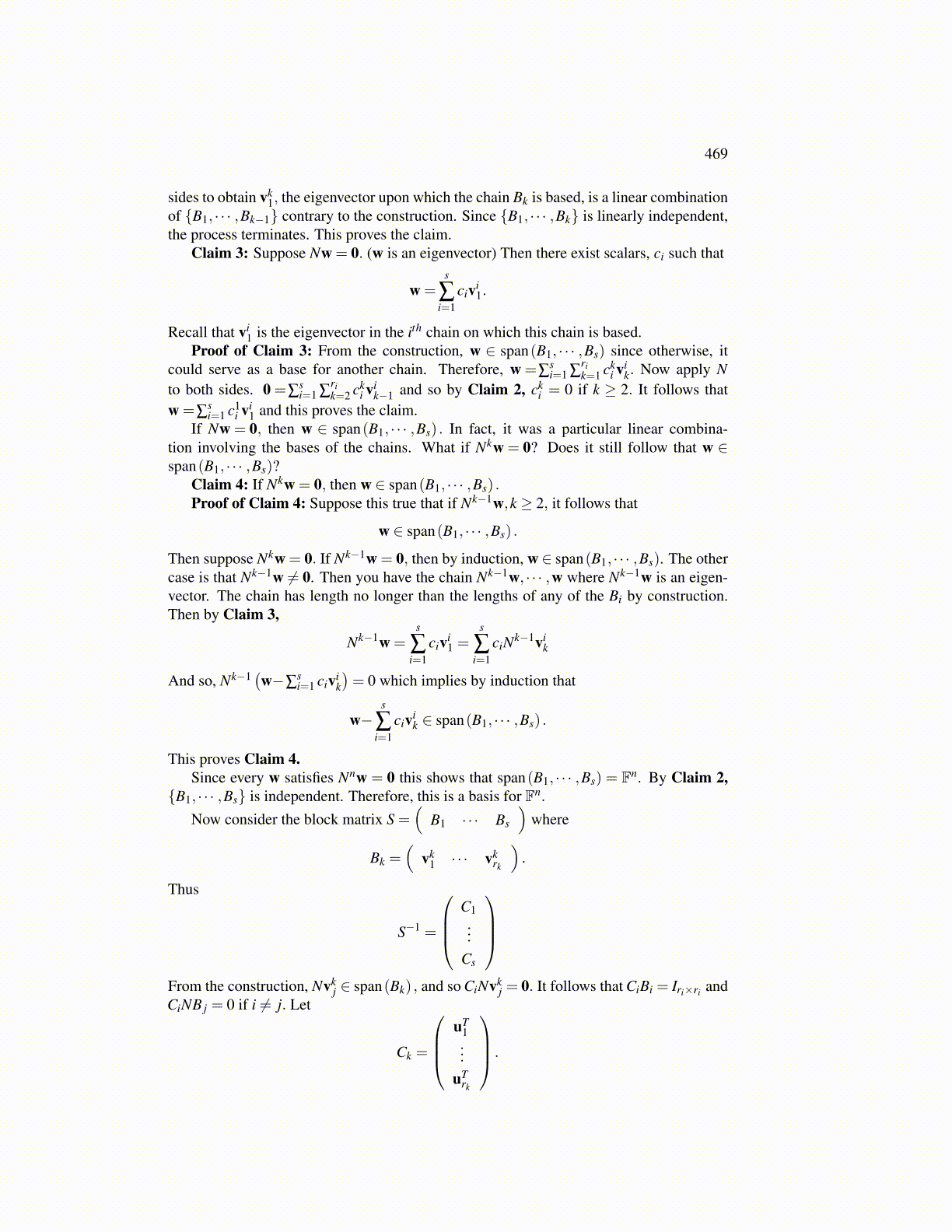
469
sides to obtain vk1, the eigenvector upon which the chain Bk is based, is a linear combination
of {B1, · · · ,Bk−1} contrary to the construction. Since {B1, · · · ,Bk} is linearly independent,the process terminates. This proves the claim.
Claim 3: Suppose Nw = 0. (w is an eigenvector) Then there exist scalars, ci such that
w =s
∑i=1
civi1.
Recall that vi1 is the eigenvector in the ith chain on which this chain is based.
Proof of Claim 3: From the construction, w ∈ span(B1, · · · ,Bs) since otherwise, itcould serve as a base for another chain. Therefore, w =∑
si=1 ∑
rik=1 ck
i vik. Now apply N
to both sides. 0 =∑si=1 ∑
rik=2 ck
i vik−1 and so by Claim 2, ck
i = 0 if k ≥ 2. It follows thatw =∑
si=1 c1
i vi1 and this proves the claim.
If Nw = 0, then w ∈ span(B1, · · · ,Bs) . In fact, it was a particular linear combina-tion involving the bases of the chains. What if Nkw = 0? Does it still follow that w ∈span(B1, · · · ,Bs)?
Claim 4: If Nkw = 0, then w ∈ span(B1, · · · ,Bs) .Proof of Claim 4: Suppose this true that if Nk−1w,k ≥ 2, it follows that
w ∈ span(B1, · · · ,Bs) .
Then suppose Nkw = 0. If Nk−1w = 0, then by induction, w ∈ span(B1, · · · ,Bs). The othercase is that Nk−1w ̸= 0. Then you have the chain Nk−1w, · · · ,w where Nk−1w is an eigen-vector. The chain has length no longer than the lengths of any of the Bi by construction.Then by Claim 3,
Nk−1w =s
∑i=1
civi1 =
s
∑i=1
ciNk−1vik
And so, Nk−1(w−∑
si=1 civi
k
)= 0 which implies by induction that
w−s
∑i=1
civik ∈ span(B1, · · · ,Bs) .
This proves Claim 4.Since every w satisfies Nnw = 0 this shows that span(B1, · · · ,Bs) = Fn. By Claim 2,
{B1, · · · ,Bs} is independent. Therefore, this is a basis for Fn.Now consider the block matrix S =
(B1 · · · Bs
)where
Bk =(
vk1 · · · vk
rk
).
Thus
S−1 =
C1...
Cs
From the construction, Nvk
j ∈ span(Bk) , and so CiNvkj = 0. It follows that CiBi = Iri×ri and
CiNB j = 0 if i ̸= j. Let
Ck =
uT
1...
uTrk
.